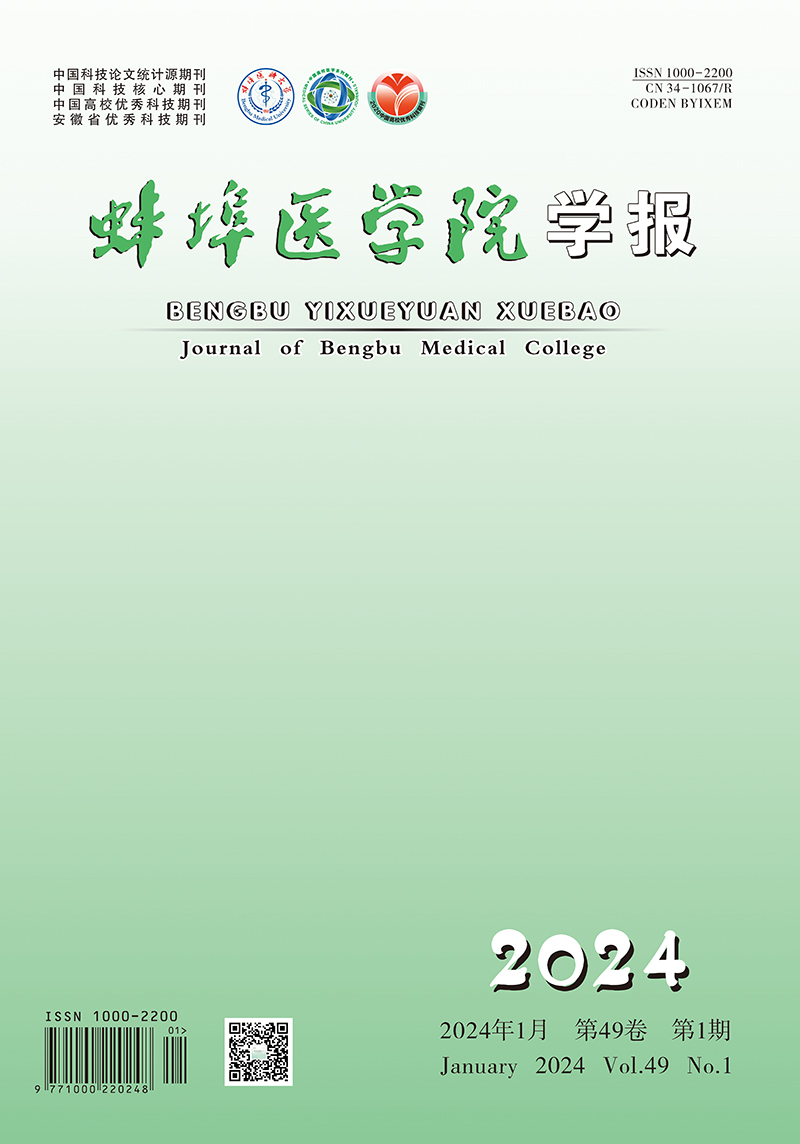-
子痫前期是临床孕产妇妊娠期特有的一种疾病, 是导致围生期胎儿及孕产妇死亡的一个重要原因[1]。早发型子痫前期(early-onset preeclampsia,EOPE)是指发生在妊娠34周内的重度子痫前期,属于妊娠期间高血压疾病的一种特殊类型,而过早终止妊娠会增加围生儿并发症及死亡率[2]。EOPE主要是由于病人血管内皮细胞受损后形成血栓,治疗方式主要以抗血栓为主[3],其发病机制可能与炎症细胞的超活化、中性粒细胞和淋巴细胞免疫应答,释放炎性细胞因子以及产生自身抗体导致内皮功能障碍,引起血管收缩和终末器官缺血有关[4]。该病具有发病早、病情发展迅速、并发症多及新生儿存活率低等特点。及时有效地控制EOPE病人病情发展是保证妊娠和分娩顺利进行的关键。常规降压、扩张血管等针对性治疗措施治疗EOPE的效果并不理想,临床上暂无特效药物[5]。目前治疗该疾病的药物种类繁多,所以选择疗效确切、安全性高的治疗药物为病人治疗已成为临床医生的关注重点[6-7]。本研究探讨EOPE病人采取低分子肝素联合硫酸镁治疗的临床效果以及母婴结局。现作报道。
HTML
-
选择2019年3月至2020年3月于我院诊治的80例EOPE病人为研究对象,根据治疗方法不同,将病人分为观察组和对照组,各40例。观察组采用低分子肝素联合硫酸镁治疗,对照组采用硫酸镁治疗。2组年龄、孕周、孕次及产次差异均无统计学意义(P>0.05)(见表 1)。纳入标准:符合《妇产科学(第九版)》中关于EOPE的诊断标准;孕周≤34周;单胎;均在我院住院分娩;本研究符合《世界医学协会赫尔辛基宣言》相关要求,所有病人对研究内容知情并签署知情同意书。排除标准:合并其他妊娠期并发症;重要脏器功能不全;需立刻中止妊娠;免疫功能紊乱;伴有严重感染;伴有恶性肿瘤;对研究药物过敏;存在精神或沟通障碍;未签署知情同意书。
分组 n 年龄/岁 孕周/周 产次/次 孕次/次 观察组 40 27.23±0.73 30.12±0.35 1.92±0.11 2.83 ±0.16 对照组 40 28.18±0.82 29.96±0.32 1.90 ±0.11 2.42 ±0.15 t — 1.49 0.32 0.21 1.98 P — >0.05 >0.05 >0.05 >0.05 -
2组病人均给予常规降压、解痉、镇静治疗,硫酸镁(成都倍特药业有限公司,批号L210102,国药准字H32023415)静脉滴注,负荷剂量4~6 g,溶于25%葡萄糖20 mL静脉推注(15~20 min),继而1~2 g/h静脉滴注维持,24 h用量不超过25 g,用药时限不超过5 d。地西泮片(上海旭东海普药业有限公司,批号AH200302,国药准字H11020898)2.5毫克/次,2次/天;硝苯地平控释片(上海现代制药股份有限公司,批号H20000079,国药准字J20180025)30毫克/次,1次/天。观察组在常规治疗的基础上加用低分子肝素钙(海南通用同盟药业有限公司,1 mL∶ 5 000 IU,国药准字H20010300)治疗,每次5 000 IU,1次/天,皮下注射, 连续用药7 d或分娩前12 h停药,若病人治疗期间出现出血倾向, 则立即停药。
-
比较2组治疗前后血压变化、尿氮素(BUN)、24 h尿蛋白定量(24 h UP)、凝血功能指标[活化部分凝血活酶时间(APTT)、凝血酶原时间(PT)、D-二聚体]及妊娠结局。
-
采用t检验、χ2检验和Fisher′s确切概率法。
1.1. 一般资料
1.2. 治疗方法
1.3. 观察指标
1.4. 统计学方法
-
2组病人治疗前收缩压、舒张压、BUN、24 h UP差异均无统计学意义(P>0.05);治疗后观察组收缩压、舒张压、BUN、24 h UP水平均低于治疗前(P < 0.05),且均低于对照组(P < 0.05~P < 0.01)(见表 2)。
分组 n 收缩压/mmHg 舒张压/mmHg BUN/(mmol/L) 24 h UP/g 治疗前 观察组 40 161.00±8.75 95.05 ±7.03 7.73 ±0.49 2.70 ±0.19 对照组 40 160.90 ±8.18 95.65±6.75 7.75 ±0.51 2.73 ±0.13 t — 0.05 0.39 0.18 0.82 P — >0.05 >0.05 >0.05 >0.05 治疗后 观察组 40 140.30 ±3.85* 89.18±3.48* 5.56 ±0.16* 0.76 ±0.66* 对照组 40 156.50 ±8.79* 94.40±5.84 6.90±0.71* 1.45 ±0.47 t — 10.68 4.86 11.64 5.39 P — < 0.01 < 0.01 < 0.05 < 0.01 治疗前 观察组 40 161.00±8.75 95.05 ±7.03 7.73 ±0.49 2.70 ±0.19 对照组 40 160.90 ±8.18 95.65±6.75 7.75 ±0.51 2.73 ±0.13 t — 0.05 0.39 0.18 0.82 P — >0.05 >0.05 >0.05 >0.05 治疗后 观察组 40 140.30 ±3.85* 89.18±3.48* 5.56 ±0.16* 0.76 ±0.66* 对照组 40 156.50 ±8.79* 94.40±5.84 6.90±0.71* 1.45 ±0.47 t — 10.68 4.86 11.64 5.39 P — < 0.01 < 0.01 < 0.05 < 0.01 组内比较*P < 0.05 -
2组病人治疗前APTT水平差异无统计学意义(P>0.05), PT、D-二聚体水平差异均有统计学意义(P < 0.05和P < 0.01);2组治疗后APTT、PT、D-二聚体水平均低于治疗前(P < 0.05),且观察组治疗后D-二聚体水平明显低于对照组(P < 0.01)(见表 3)。
分组 n APTT/s PT/s D-二聚体/(μg/L) 治疗前 观察组 40 26.88±2.71 13.94 ±0.50 408.02 ±21.67 对照组 40 27.04±2.96 13.73 ±0.71 426.78 ±23.38 t — 0.25 2.58 3.72 P — >0.05 < 0.05 < 0.01 治疗后 观察组 40 23.44±6.24* 11.16 ±1.06* 171.88±4.13* 对照组 40 24.03±5.19* 10.78 ±0.87* 198.75 ±3.17* t — 0.46 1.75 32.64 P — >0.05 >0.05 < 0.01 组内配对t检验:P < 0.05 -
观察组妊娠周数明显长于对照组(P < 0.01),新生儿窒息率低于对照组(P < 0.05),2组围产儿死亡率差异无统计学意义(P>0.05)(见表 4)。
分组 n 妊娠周数 新生儿窒息 围产儿死亡 观察组 40 35.8±0.85 2(5.00) 0(0.00) 对照组 40 34.0 ±0.14 8(20.00) 1(2.50) t — 13.17 4.11 △ 1.01 P — < 0.01 < 0.05 >0.05▲ △示χ2值;▲示Fisher′s确切概率法
2.1. 2组病人血压、肾功能指标水平比较
2.2. 2组病人凝血功能指标水平比较
2.3. 2组病人母婴结局及并发症发生率比较
-
子痫前期是一种潜在的威胁孕妇生命安全的高血压疾病,发生在妊娠20周后,被定义为收缩压≥140 mmHg和舒张压≥90 mmHg,以及>0.3 g/24 h尿蛋白定量[8-9]。可分为早发型(妊娠在34周前)和迟发型(妊娠在34周后)[10],其他学者也有将子痫前期分为早发型(低于34周)/中间型(34~37周之间)和晚发型(37周后)[11]。EOPE属于子痫前期的一种特殊类型, 该病易引起孕妇肝肾功能的损害,严重影响母婴健康[12],此外还可造成孕妇胎盘功能不全,引起子宫胎盘血管功能异常,导致严重的妊娠并发症,包括子痫、胎盘早剥和胎儿宫内生长受限(IUGR),这是母亲和胎儿死亡率和发病率的主要原因[13],胎盘早剥是指妊娠20周后胎盘部分或全部脱离子宫壁,在分娩之前,或者甚至在分娩过程中都可能发生[14]。大多数孕妇妊娠结局并不理想[15]。目前临床上主要为降压、解痉对症治疗,但治疗效果并不理想。随着医疗科学不断进步,广大临床医务工作者不断创新与研究,EOPE的治疗方法在不断的完善,卜春艳等[16]认为在传统硫酸镁治疗的基础上联合低分子肝素治疗EOPE,能够达到更好的治疗效果,可改善孕妇凝血功能,纠正高血压,促进病情恢复,改善妊娠结局。一项国外研究[17]指出低分子肝素在妊娠34周之前,对预防EOPE和IUGR有积极作用, 另一项研究[18]则证明使用低分子肝素对孕妇妊娠的发展没有不良反应。应用低分子肝素对于孕妇及胎儿的疗效主要是由于它们的抗血栓作用[19-20],对微循环改善方面有着良好疗效,能够可有效保护病人肾小球,降低其通透性,提高肾脏血流量,改善孕妇肾功能[21]。低分子肝素作为抗凝血酶Ⅲ依赖性抗血栓形成药,能够有效地抑制凝血系统的激活,抑制机体内血栓形成[22]。本研究通过比较低分子肝素联合硫酸镁与传统应用硫酸镁治疗EOPE,探讨低分子肝素在治疗EOPE中的疗效,结果显示,观察组病人治疗后D-二聚体水平、收缩压、舒张压、BUN、24 h UP水平及新生儿窒息率均低于对照组,观察组妊娠周数明显长于对照组,提示低分子肝素联合硫酸镁治疗EOPE可明显改善孕妇的高血压水平和肾功能,延长孕周,改善母婴妊娠结局。
综上所述,低分子肝素联合硫酸镁治疗EOPE能够有效地缓解病人血液高凝状态,改善肾功能,延长妊娠周数,改善母婴结局,值得推广。






 DownLoad:
DownLoad: